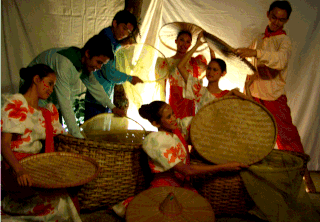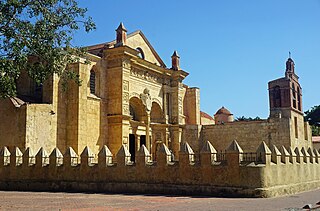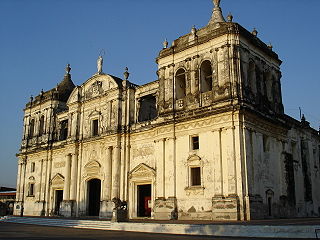Related Research Articles

Religion in the Philippines is marked by a majority of people being adherents of the Christian faith. At least 92% of the population is Christian; about 81% belong to the Catholic Church while about 11% belong to Protestantism, Orthodoxy, Restorationist and Independent Catholicism and other denominations such as Iglesia Filipina Independiente, Iglesia ni Cristo, Seventh-day Adventist Church, United Church of Christ in the Philippines, Members Church of God International (MCGI) and Evangelicals. Officially, the Philippines is a secular nation, with the Constitution guaranteeing separation of church and state, and requiring the government to respect all religious beliefs equally.
Freedom of religion in Colombia is enforced by the State and well tolerated in the Colombian culture. The Republic of Colombia has an area of 439,735 square miles and its population is estimated at 46 million. Although the Government does not keep official statistics on religious affiliation, a 2001 poll commissioned by the country's leading newspaper, El Tiempo, indicated that the religious demography is as follows:

Protestant denominations arrived in the Philippines in 1898, after the United States took control of the Philippines from Spain, first with the United States Army as chaplains and then within months the denominations sent missionaries.

The Catholic Church in Colombia is the branch of the Roman Catholic Church in the South American nation of Colombia.

Christianity is the most widely professed religion in the Dominican Republic. Historically, Catholicism dominated the religious practices of the country, and as the official state religion it receives financial support from the government. In modern times Protestant and non-Christian groups, like Islam, Jews, have experienced a population boom.

Colombians are people identified with the country of Colombia. This connection may be residential, legal, historical or cultural. For most Colombians, several of these connections exist and are collectively the source of their being Colombian.

Religion in Nicaragua is predominantly Christian and forms a significant part of the culture of the country as well as its constitution. Religious freedom and religious tolerance is promoted by both the Nicaraguan government and the constitution.

The National Administrative Department of Statistics (DANE) does not collect religious statistics, and accurate reports are difficult to obtain. However, based on various studies and a survey, about 90% of the population adheres to Christianity, the majority of which (70.9%) are Roman Catholic, while a significant minority (16.7%) adhere to Protestantism.
Religion in Colombia is dominated by various forms of Christianity and is an expression of the different cultural heritages in the Colombian culture including the Spanish colonization, the Native Amerindian and the Afro-Colombian, among others.
While Protestants arrived in the island of Cuba early in its colonial days, most of their churches did not flourish until the 20th century with the assistance of American missionaries. In the early 20th century, Cuban Protestant churches were greatly aided by various American missionaries who assisted in the work in the churches and also provided support from their home churches. When Fidel Castro’s regime overtook the country in 1959, Protestant churches were legally allowed to continue. Nevertheless, certain incidents as detailed below, and religious persecution kept them from prospering. During the Special Period that began in 1991, Protestant churches began to flourish once again and today have become a primary religious group of Cuba. The Protestant population of Cuba is estimated at 11%.

El Salvador's approximately 6.2 million inhabitants are mostly Christian. Evangelical Protestantism is experiencing rapid growth in recent decades while the Catholic share of the population is on decline.

When it comes to religion, the Ecuadorian society is relatively homogeneous, with Christianity being the primary religion. Roman Catholicism is the main Christian denomination in the country. However, affiliation with Protestant churches is increasing.

According to the most recent census conducted by the National Institute of Statistics in 2007, 56.1% of the population of Mozambique were Christian, 17.9% were Muslim, 18.7% had no religion, and 7.3% adhered to other beliefs. These figures need to be used with caution, especially those for the population that is categorised as having no religion, a significant section of whom is likely to practice traditional animist beliefs.

Christianity is the largest religion in Cape Verde, with Roman Catholics having the most adherents. Different sources give varying estimates on the relative sizes of various Christian denominations. More than 93% of the population of Cape Verde is nominally Roman Catholic, according to an informal poll taken by local churches. About 5% of the population is Protestant. The largest Protestant denomination is the Church of the Nazarene. Other groups include the Seventh-day Adventist Church, the Church of Jesus Christ of-day Saints, the Assemblies of God, the Universal Church of the Kingdom of God, the New Apostolic Church and various other Pentecostal and evangelical groups.

Christianity constitutes the majority religion in Cape Verde, an island nation located off the western coast of Africa. More than 93% of the population of Cape Verde is nominally Roman Catholic, according to an informal poll taken by local churches. About 5% of the population is Protestant. The largest Protestant denomination is the Church of the Nazarene. Other groups include the Seventh-day Adventist Church, the Church of Jesus Christ of Latter-day Saints (Mormons), the Assemblies of God, the Universal Church of the Kingdom of God, the New Apostolic Church and various other Pentecostal and evangelical groups.

Christianity is the religion adhered to by 32.7 per cent of the population of Mauritius. Of these, 80.3 per cent are Roman Catholics. The Mauritian Creole and Franco-Mauritian ethnic groups are mostly Christian and significant parts of the Sino-Mauritian ethnic group are also mainly Christian. Mauritius got independence in 1968 and there was no state religion in Mauritius defined in the constitution. The religious organizations present at the time of independence, namely, Roman Catholic Church, Church of England, Presbyterian Church, Seventh-day Adventist, Hindus and Muslims are recognized by parliamentary decree.

Protestantism in Italy comprises a minority of the country's religious population.
William Mauricio Beltrán Cely – Colombian sociologist, professor from the Universidad Nacional de Colombia; the area of interest is a religious pluralization in Colombia and growth of protestantism.
Mennonites in Colombia were until 2016 almost only converts from the general and indigenous Colombian population to the Mennonite faith. Since then conservative ethnic Mennonites with a German background who belong to the so-called Russian Mennonites started to immigrate to Colombia.
References
- ↑ Beltrán Cely, William Mauricio. "Del monopolio católico a la explosión pentecostal'" (PDF) (in Spanish). Universidad Nacional de Colombia, Facultad de Ciencias Humanas, Centro de Estudios Sociales (CES), Maestría en Sociología. ISBN 978-958-761-465-7. Archived from the original (PDF) on 2016-03-27.
- ↑ Beltrán Cely, William Mauricio. "Descripción cuantitativa de la pluralización religiosa en Colombia" (PDF). Universitas humanística 73 (2012): 201–238. – bdigital.unal.edu.co. Archived from the original (PDF) on 2014-03-29.
- ↑ "Religion in Latin America, Widespread Change in a Historically Catholic Region". pewforum.org. Pew Research Center. November 13, 2014.
- ↑ "Colombia, Adventist Atlas". Archived from the original on 2016-03-03. Retrieved 2008-03-10.